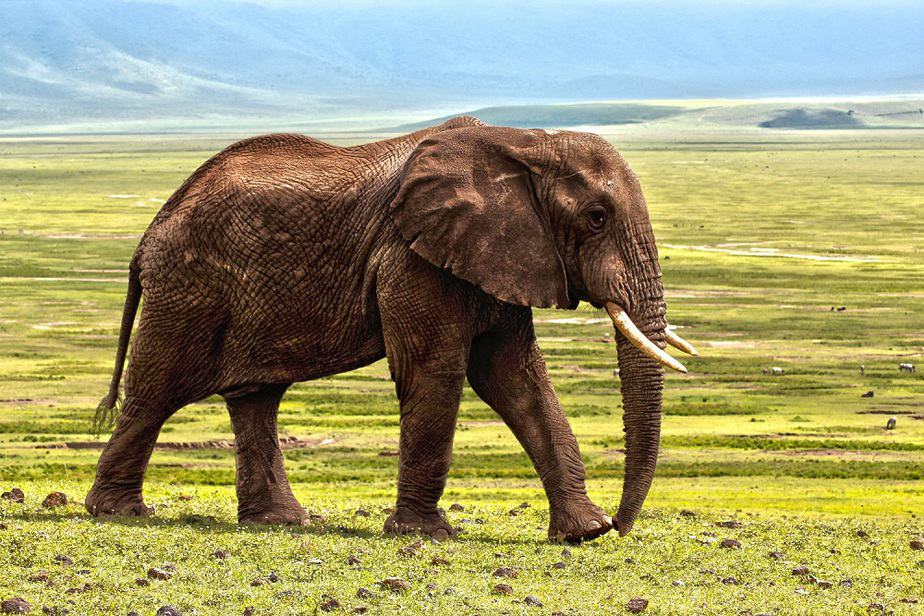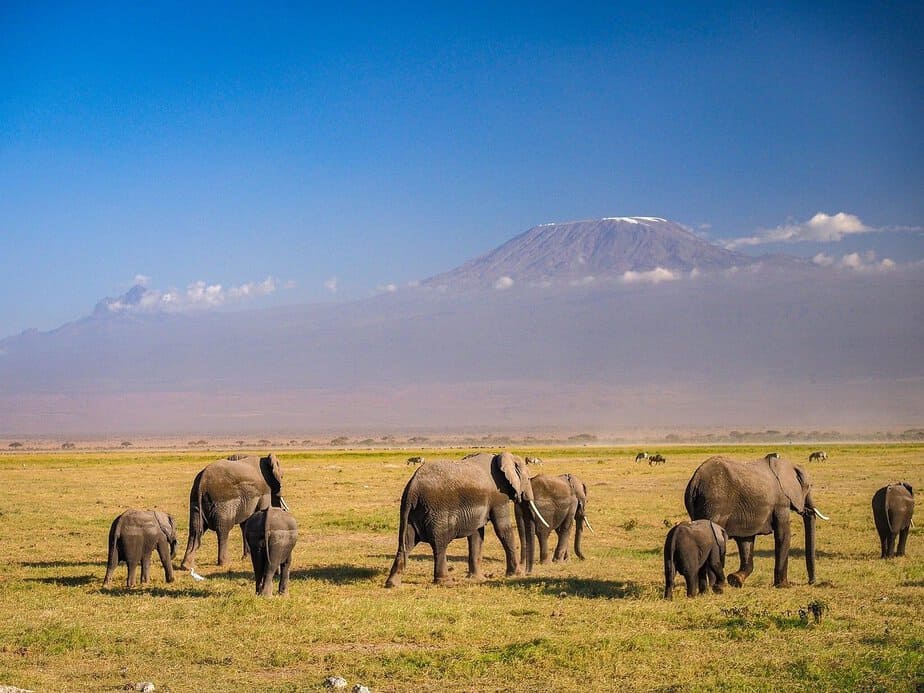
11 Incredible Elephant Facts to Know Before Your African Safari
Your dream has come true — you’ve booked an African safari.
And, now that the plan’s in place, you want to learn a bit more about the incredible animals you’ll see on your journey.
The African elephant is one of the animals that people most want to see on their safari. In fact, it’s one of the Big Five, the creatures that big game hunters saw as the most difficult to hunt on foot. Now, its safari-goers who seek out this quintet of animals, which also includes the rhinoceros, lion, leopard and cape buffalo.
And that’s not even close to the most incredible of the elephant facts out there. Here are 11 wow-worthy truths to get you excited for your trek into the bush.
1. They’re the Largest Land Mammal
If you cross paths with an African elephant on your safari, you’ll see the world’s largest land mammal. They’re notably bigger than even Asian elephants.
An African elephant can weigh up to 14,000 pounds and measure in at anywhere from 8 to 13 feet in height. Asian elephants, on the other hand, stand at up to 9.2 feet tall and only weigh 11,000 pounds at their largest.
2. Their Closest Living Relative Isn’t What You’d Expect
Somehow, the largest land mammal’s closest living relative is extra-small. It’s called the rock hyrax, a small mammal of which you’ve probably never heard.
The tiny, brown creature dwells in the rocky stretches of Subsaharan African and Arabian landscapes. Its toes, skull, and teeth are very similar to the elephant’s, making them genetic cousins.
3. You Can Differentiate Them By Their Ears
Let’s say you have a small African elephant standing next to a standard Asian elephant. How can you tell them apart?
It turns out that their ear shapes give them away. Handily, the African elephant’s ears have the same form as the African continent. Meanwhile, Asian elephants have ears that look a lot like India’s outline.
4. They Carry Babies For a Very Long Time
A top draw of your Tanzanian safari will be catching a glimpse of an elephant — and perhaps a baby, too. If you see a calf, you should consider yourself extra lucky. Elephant moms carry their babies for a whopping 22 months before delivery, the longest gestation period of any animal.
Delivering an elephant calf is no small feat, either. At birth, their babies stand at three feet tall and weigh in at 250 pounds.
5. They’re Not Bug Lovers
You might think that an animal as large as the African elephant wouldn’t care about bugs. Indeed, they don’t mind traipsing over insects that reside on the floor of the savannah.
But elephants do have a problem with bugs when they end up on their food. As herbivores, the world’s largest mammal dines only on leaves, twigs, fruit, grass, and bark, among other meat-free eats.
If they find ants on their herbivorous fare, though, they won’t eat it. That’s because their trunks contain a slew of very sensitive nerve endings. If they get ants in there, it hurts — so they avoid ant-covered meals.
6. They Eat All Day Long — Quite Literally
Elephants don’t get to be so large by accident. As it turns out, they spend anywhere from 12 to 18 hours each day eating.
And, as they munch, their trunks do a lot of the work. They sniff out food with it, and they use their trunks to grab what they want to eat. Imagine using your nose to pick up your dinner — it wouldn’t be pretty!
7. Peanuts? An Elephant Wouldn’t Dare
The best books about Africa provide you with information about the animals, environment, and culture you can expect on your journey. But popular culture has painted a more pervasive picture of elephants that is simply untrue. Specifically, there’s a misconception about these giant mammals and their love of peanuts.
As it turns out, elephants don’t eat peanuts at all. They can’t find them in the wild in Africa. And zoos don’t feed the legumes to their animals, either.
8. Elephants Believe in Girl Power
Perhaps your safari leads you past a herd of elephants. As you watch them make their way across the savannah, keep in mind that what you’re probably seeing is a group of females banded together.
A matriarch leads her elephant families, and she tends to be the oldest in the herd. She leads the pack, choosing when they move and where they go throughout the day.
With her, you’ll see her daughters and theirs, too. Boy elephants stick around until they hit puberty, which happens when they’re between 12 and 15. At that time, they strike out on their own — or join up with a small male, although they’re much more loose-knit than the female herds.
If you know anything about other safari animals, you know elephants aren’t alone in this. Lions also operate in female-led groups, where the males have fewer responsibilities.
9. Elephants Use Sunscreen
When you go on safari, you have to wear protective clothes to keep you safe and comfortable. Elephants are no different — they have to safeguard themselves from the African sun, too.
Their methods for sunscreen will be a bit different than yours, though. Elephants slather themselves in mud and sand to keep the sun’s rays off of their skin. Pretty clever, right?
10. Elephants Know Who They Are
You’ve probably seen hilarious YouTube videos of puppies, for example, who see their reflection for the first time. They often bark and chase themselves, not realizing that the dog they’re seeing is actually them.
Elephants, however, have passed the mirror test, meaning they recognize themselves in the looking glass. The same goes for an elite group of animals, including dolphins, magpies, great apes, and human toddlers.
11. Elephants Say Hi to Each Other
How do you greet your loved ones? With a hug, perhaps? Elephants do the same.
Of course, they don’t wrap their arms around one another as humans do. Instead, elephants greet each other with a trunk hug. They twist their noses around each other for an embrace that only their species can give.
Elephant Facts — They’re Incredible
As you’ve learned from these elephant facts, they are certainly one of the world’s most incredible species. And, soon enough, you’ll have the chance to see one on your African safari.
Need more information to prepare you for your once-in-a-lifetime journey? Keep tabs on our blog for all you need to know.


